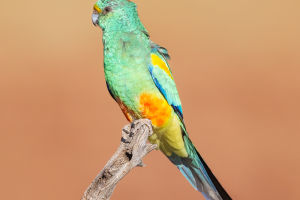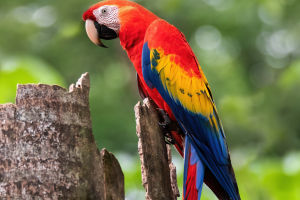Why Cats' Eyes Change Color
Have you ever noticed your cat's eyes gleaming with an array of different colors depending on the lighting?
It's not just your imagination—your cat's eye color can indeed appear to change, and there's some fascinating science behind this phenomenon.
Let's dive into the reasons why your feline friend's eyes can go from emerald green to gold in a flash and explore what other factors might be at play.
The Basics of Cat Eye Structure
To understand the science behind cat eye color changes, we first need to look at how a cat's eyes are structured. Cats, like many animals, have a special layer in their eyes called the tapetum lucidum. This layer reflects light, enhancing a cat's ability to see in the dark. It's also the reason why their eyes often seem to glow in dim lighting or when a flashlight hits them.
What's fascinating about the tapetum lucidum is how it interacts with light. Since this layer bounces light back through the retina, it can cause a shimmering or glowing effect. Depending on the light source and its angle, this reflective layer can make your cat's eye color look slightly different. So, the next time your kitty's eyes flash from green to amber, thank their built-in night vision!
How Light Affects Eye Color
Much like human eyes, the appearance of a cat's eye color can shift depending on the lighting. Cats have pigments in their irises—ranging from shades of blue, green, yellow, or brown. However, the perceived color of a cat's eyes often changes with lighting because of how light interacts with their iris and tapetum lucidum.
In natural daylight, your cat's eyes will typically look the truest to their natural hue. But when the sun is setting or in dim artificial lighting, their eyes might take on a different tone or even shine in a completely different color. The tapetum plays a major role in these shifts by reflecting low light out of the eye. This creates that “glow” and can give the illusion that the eyes are changing color.
Age and Eye Color Changes
Another interesting factor that can influence a cat's eye color is age. Kittens are often born with blue eyes, which change as they grow older. Around six to eight weeks, you'll start to notice their eye color deepening or transitioning to their permanent shade. This change happens because, as the kitten's melanin levels increase, the pigments in their irises develop into their final color.
Similarly, older cats might also experience subtle shifts in their eye color. Sometimes, age-related health issues, like high blood pressure or eye infections, can cause noticeable changes. While these changes are generally more subtle than those caused by lighting, it's always a good idea to consult your vet if you notice any drastic shifts in your cat's eye color as they age.
Health Conditions and Eye Color
While light and age are the main factors that can affect a cat's eye color, certain health conditions can also play a role. Heterochromia—when each eye is a different color—is one of the more well-known conditions, often seen in breeds like the Turkish Van or the Khao Manee. However, sudden changes in eye color could signal a deeper issue.
Ask the Vet: Why do kitten's eyes change color?
Video by Pets Central
For instance, a cat's eyes turning from clear to cloudy color could indicate cataracts or other vision-related problems. Similarly, jaundice can turn a cat's eyes yellow, while infections like uveitis can cause the eyes to appear red or inflamed. These changes are not part of the normal lighting-dependent shifts and should be examined by a veterinarian immediately.
The Role of Breed and Genetics
Breed and genetics also play a significant role in the color and appearance of your cat's eyes. For example, the Siamese breed is known for its striking blue eyes, while green or gold eyes are more common in Blue Shorthair and British Shorthairs. The color of a cat's eyes is largely determined by the amount of melanin in their irises—less melanin results in lighter colors like blue, while more melanin leads to deeper colors like green or amber.
So, if you've ever wondered why your cat's eyes seem to shift from day to day or even hour to hour, rest assured—it's not magic, but a wonderful blend of biology, genetics, and light that brings these enchanting changes to life.
Cats have some of the most mesmerizing eyes in the animal kingdom, and their color changes only add to the mystery. Whether it's the way light plays off the tapetum lucidum, the effects of age, or even the presence of certain health conditions, the shifts in a cat's eye color tell a fascinating story of evolution, adaptation, and beauty.


